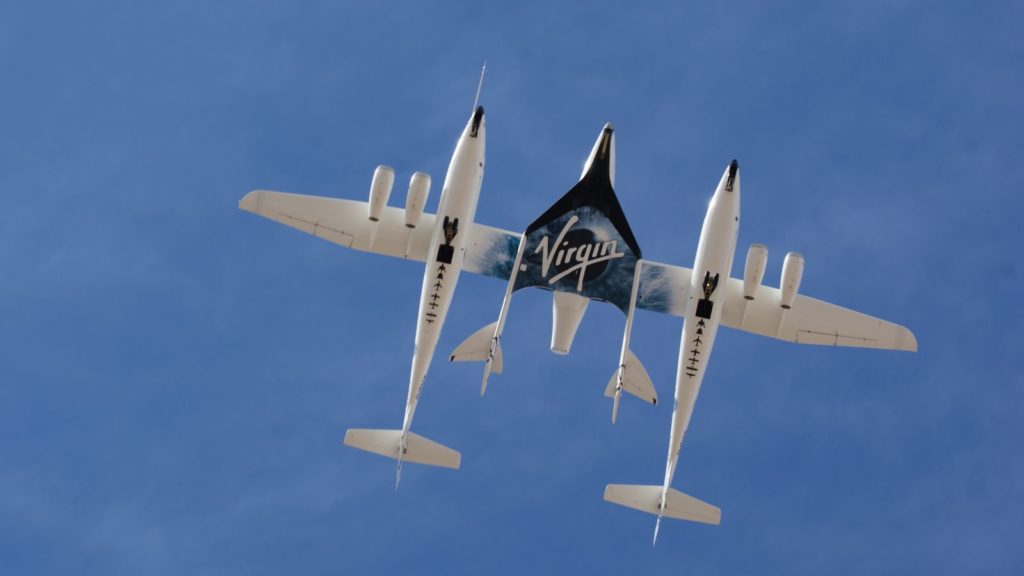OpenAI has launched GPT 5.2, a major model upgrade now available in both the API and ChatGPT. It is described as the company’s most…
Sci-fi gone real: flying cars, commercial space travel and teleportation

Sci-fi gone real is a series that focusses on the extravagant concepts dreamt up in the world of sci-fi, exploring just how close they are to becoming a reality.
In this piece, we will be exploring the topic of transportation. From teleportation to flying cars, reality is rapidly becoming stranger than fiction. If you’re over the hassles and limitations of contemporary transportation, then this article might hold some hope for you yet.
Teleportation
Imagine a world without traffic jams or twenty-hour flights; a world where distance is merely the obstacle of scientific and mathematical endeavours. Well, this world might be a lot closer than you think… kind of.
In July 2017, a group of Chinese scientists teleported a photon particle from their laboratory in Tibet to a satellite orbiting Earth 1400km (870 miles) away. The scientists achieved this by leveraging the effects of quantum entanglement, a phenomenon that appears when two particles are created simultaneously at the same place, and effectively share the same existence.
When these two particles are then separated, quantum entanglement allows them to still experience the same existence. For instance, if the state of the one photon changes, the other will automatically follow suit.
Now comes the really interesting part: if a third photon is then introduced to one of the aforementioned particles, the other will mirror this process and effectively also mirror the third particle.
An important thing to note here is that this isn’t exactly the teleportation experienced in the world of sci-fi — where physical matter is instantaneously transported over a great distance — but rather the state of that matter. An example many physicists use is that of a fax machine: it sends data based on marks on paper rather than the actual paper. Then the other fax machine receives this information and applies it to a paper that already exists there.
So while this might mean that our dreams of teleporting to the moon and back are still lingering in the realm of pipe dreams, the applications of discovery are still monumental. In the case of the Chinese scientists, the main goal was create an impenetrable communications network.
“The laws of nature offer protection,” says Bristol University’s Professor Sandu Popescu, who has been working on quantum entanglement projects since 1990.
“If someone was to intercept the information you could detect it because whenever you try to observe a quantum system you disturb it. So, technically, is someone wanted to a quantum internet, they would have to have an in-depth knowledge of quantum physics. And even then, it would still be detectable.”
Flying cars
Since the birth of humanity, we have stared enviously at the freedom enjoyed by the flying creatures of the world. While teleportation could provide us with the luxury of instant travel, it could never afford us the mesmerising experience of freely soaring through the air. Thankfully, these days might be closer than you think and, in fact, might already be here.
Currently, flying cars are officially referred to as VTOLs (Vertical Take Off and Landing aircraft). According to numerous experts, the reality of a flying car is just over the horizon. Kitty Hawk CEO, Sebastian Thrun, says that “flying cars could be in the air within five years”. Joe Kraus, a partner at GV (venture capital arm of Alphabet), says flying cars are “inevitable instead of impossible”. But these claims mean nothing without any evidence to back them up.
One of the names at the vanguard of the flying car revolution is Dutch company, PAL-V. In March of this year, they will be premiering their first production model of their latest flying car incarnation, “The Liberty”, a two seater, dual-engine VTOL that costs between €300 000 and €400 000. Don’t expect to get your hands on one soon though. The Liberty model is currently “sold out until 2020” according to CEO Robert Dingemanse.
Another company, namely Bell Helicopters, is busy working on an a flying passenger vehicle that they’re looking to couple with Uber’s “air taxi” vision, a concept Uber is already looking to test via air trails over major cities such as Dallas, Dubai, and Los Angeles.
Commercial space travel
How often have we shifted our gaze towards the night sky and imagined exploring the world among the stars? Well, according to some experts, many of us could potentially enter the elusive skyscape of space within our lifetime… if we have a buck to spare, that is.
Currently, the two main competitors in realising this dream are Elon Musk’s SpaceX and Richard Branson’s Virgin Galactic.
With the recent success of the Falcon Heavy launch, the largest and most powerful rocket ship currently in operation, SpaceX is undeniably seen as the most trustworthy and capable forerunners in the fabled space race.
One of the most important aspects of the Falcon Heavy, in terms of a viable commercial space travel, is its now proven reusable rocket system, which drastically softens the financial blow of launching a spaceship.
As for manned-tourists-flights, according to SpaceX, they would have sent two (incredibly rich) tourists on a round-trip to the moon, but with the current success and progress of its special BFR project (Big Fucking Rocket), this plan has been put on the backburner, so to speak.
Virgin Galactic’s top contender at the moment is the suborbital ‘SpaceShipTwo’. In contrast to its competitors, rather than launching the passenger ship from the Earth’s surface, the SpaceShipTwo will be flown into the upper-atmosphere for launch by the WhiteKnight Two, where it will make its way to low Earth orbit.
This eliminates many of the dangerous variables of a surface launch such as gravitational forces and weather elements. Over five hundred people have reportedly already booked their flights on the SpaceShipTwo, which is said to be launched somewhere in 2018.
Boeing is another contender that not many might be are aware of. But as one of the greatest aviation companies in the world (owning over 43% of the commercial aircraft market), they’re certainly not going to sit on their laurels when it comes to the space race.
Boeing is largely focussed on specifically providing commercial space flights for space tourism and is currently working hard on the CST-100 Starliner. This reusable capsule-shaped spacecraft will be able to seat seven passengers and is designed to be energy-efficient and cost-effective, theoretically making it one of the most viable options as a commercial spaceship.
Currently the Starliner is only a prototype but Boeing hopes to do their first test launch somewhere in 2018.
Jetpacks
You might be surprised to know that the world’s first jetpack was designed all the way back in 1919 by Russian inventor, Aleksandr Fyodorovich Andreyev. The proposed twin-engine jetpack was powered using a mixture oxygen and methane, and boasted two one-meter wings on each side. Unfortunately, even though a patent was issued for the gadget, it was never built.
But fast-forward a century to the present and we have now have a range of jetpacks ready to fly us into the air. Many of these contemporary designs only give the illusion of free personal flight though, such as the water-powered Jetlev-Flyer that sucks up water through a hose and blasts it out of the pack, allowing you to hover in the air but really go anywhere. But thankfully there quite a few designs that hold much promise for a future filled with humans whizzing through the air.
Currently, Jetpack Aviation’s JB10 jetpack is considered by many to be the only true jetpack operating today. The ultra-light jetpack, designed and flown by Jetpack Aviation CEO David Mayman, is fitted with two turbojet engines adapted from high-speed target drones and boasts cutting-edge custom electronic and control systems. The JB10 also recently reached a milestone, with the FAA (Federal Aviation Administration) approving it for ultralight recreational flight under the Federal Aviation Regulation Part 103.
At present, this jetpack will set you back US$250 000 but unfortunately you can’t go flying around on your own as of yet, as Mayman and his team are still working on improving its safety credentials. But you can fly it under his tutelage while tethered for safety. This introductory course will cost you about US$3000. So, for now, it seems the fruits of the future will only be palatable by ultra-wealthy.
Edit: A previous version of this article stated that the Falcon Heavy is the largest rocket in history, but it is in fact the largest currently operational rocket. The piece has been corrected to reflect this.
Feature image: Virgin Galactic’s SpaceShipTwo in 2010, by Jeff Foust via Flickr (CC 2.0 BY)


